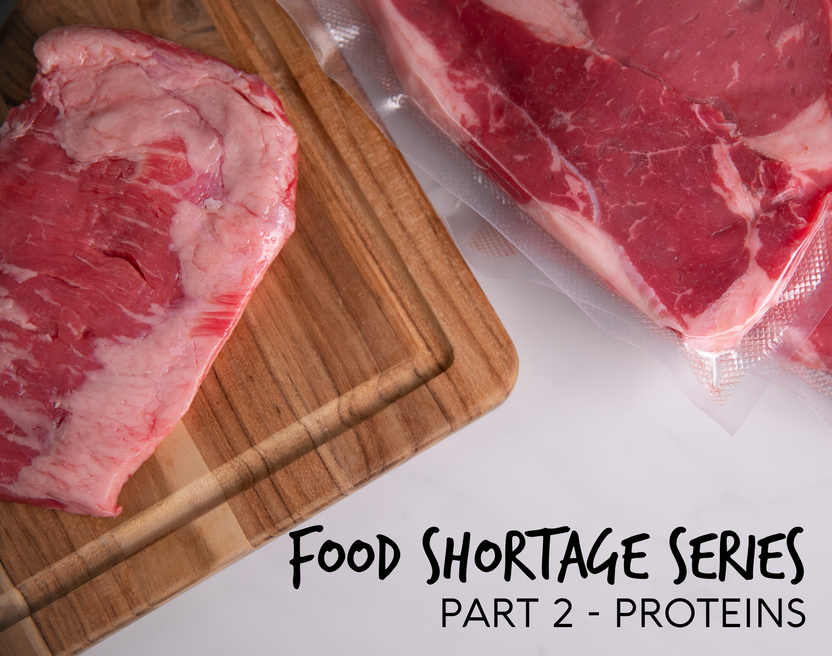Food Shortage Series - Part 2 - Vacuum Sealing Proteins for Storage
Posted by Avid Armor on May 27th 2022
Buying in bulk is one of the best ways to save money while grocery shopping, especially when it comes to buying meat.
This part of the Food Shortage Series will be covering how to effectively store proteins, such as chicken, beef, fish, or pork for long-term storage.
Proteins can be vacuum sealed in either an external suction-type sealer or a chamber sealer, however, no vacuum sealer model is more ideal than the other for this.
With that being said, we do have some recommendations based on what you are planning to vacuum seal.
If you are wanting to buy meat in bulk or butcher/process your own wild game or meat, then a suction sealer might work best for you. The Avid Armor A100 is our tried and true vacuum sealer that is made for the rigorous demands of processing and butchering wild game, fish and harvest. This machine will not break the bank for those that just need an easy-to-use machine for everyday use.
If you want a suction sealer that has a longer seal bar and has a few more bells and whistles, then the Magic Vac Jumbo 30 Evo Plus would be a good option for vacuum sealing proteins. This sealer was designed for the ‘avid’ outdoorsman who loves to hunt, fish, and process game.
Suction sealers are great because pre-cut vacuum sealer bags or vacuum sealer rolls can be used with them. When vacuum sealing small, or individual size portions, we recommend using pre-cut bags for ease of use, however, if you were to vacuum seal a rack of ribs, a large hind quarter, or any other large cuts of meat, making a custom bag size from a roll is the way to go.
When vacuum sealing proteins with higher moisture in a suction sealer, it is crucial to follow these steps listed below before vacuum sealing.
Steps to Vacuum Seal High Moisture Proteins (Chicken, Fish, Etc.):
1. Pat the protein with a paper towel to take off some of the excess moisture.
2. Place the protein in a vacuum sealer bag that is large enough for there to be at least three inches of headspace above the protein.
3. Make sure the seal area is clean and free of any moisture or residue. If there is residue, wipe the inside of the bag with a paper towel.
4. Place the bag over the seal bar and close the vacuum sealer lid.
5. Press the ‘Auto Vac & Seal’ Button to run a vacuum cycle.
6. The protein will start to stick to the vacuum bag, so start to massage the protein inside the bag to allow for all the air to be pulled out.
7. Once the cycle is complete, your protein is ready for long-term freezer storage!
Note: The vacuum sealed protein will still be “squishy” to the touch. It will not feel hard and compressed like dry goods would.
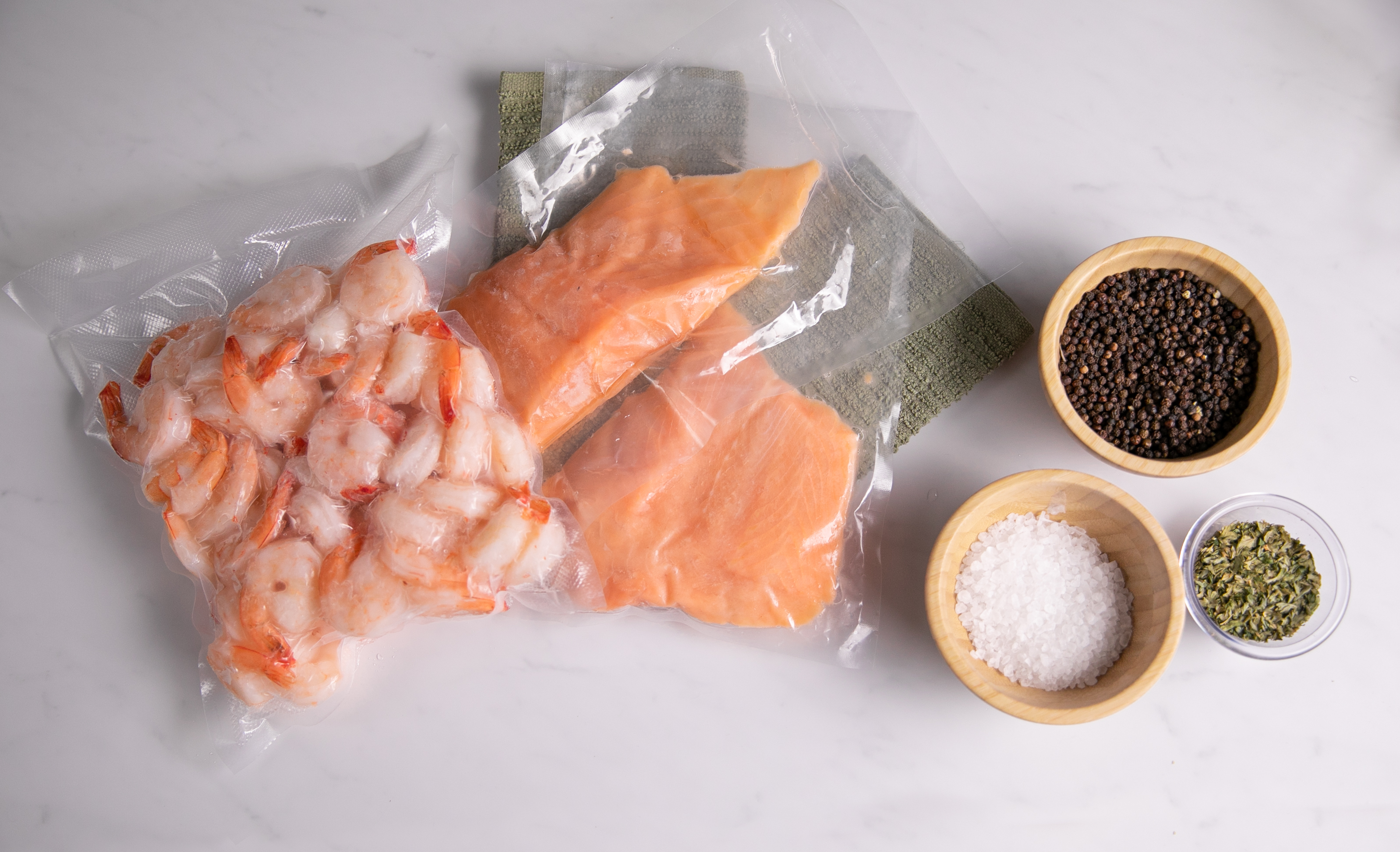
>>> Check out more photo & video content on our Instagram!<<<
How to Get a Tight Vacuum on High Moisture Proteins Using the Avid Armor A100 Vacuum Sealer
Chamber sealers, such as the Avid Armor Ultra Series USV20, USVX, and USV32, would be for those who want to vacuum seal smaller protein items or high moisture proteins without the added steps that are necessary with a suction sealer.
Steps to Vacuum Seal Proteins Using a Chamber Sealer:
1. Place the protein in a chamber pouch that is large enough for there to be at least three inches of headspace above the protein.
2. Make sure the seal area is clean and free of any moisture or residue. If there is residue, wipe the inside of the pouch with a paper towel.
3. Press the ‘Auto Vac & Seal’ Button to run a vacuum cycle.
4. Once the cycle is complete, your protein is ready for long-term freezer storage!
[HACK!] Vacuum Seal Proteins Using a Chamber Sealer & Vacuum Sealer Bags/Rolls:
1. Pat the protein with a paper towel to take off some of the excess moisture.
2. Place the protein in a vacuum sealer bag that is large enough for there to be at least three - four inches of headspace above the protein.
3. Make sure the seal area is clean and free of any moisture or residue. If there is residue, wipe the inside of the bag with a paper towel.
4. Keeping the vacuum bag outside of the chamber, place the bag opening across the seal bar and close the chamber lid.
5. Press the ‘Auto Vac & Seal’ Button to run a vacuum cycle.
6. The protein will start to stick to the vacuum bag, so start to massage the protein inside the bag to allow for all the air to be pulled out.
7. Once the cycle is complete, your protein is ready for long-term freezer storage!
The Ultimate Chamber Vacuum Sealer Hack
Chamber sealers excel at vacuum sealing liquids, so if you like to make broths or stocks using bones or proteins, a chamber machine would be for you. As long as the broth or stock is room temperature before vacuum sealing, you can fill up a chamber pouch 50% full and vacuum seal the liquid for long-term freezer storage.
Not only does buying proteins in bulk or butchering your own meat saves money, but so does vacuum sealing! Take a look at the difference between what a fresh steak looks like vs. vacuum sealed steaks that have been in the freezer for a year vs. store-packaged steaks that have been in the freezer for the same amount of time. The proof is in the picture . . . no freezer burn on the vacuum sealed protein!
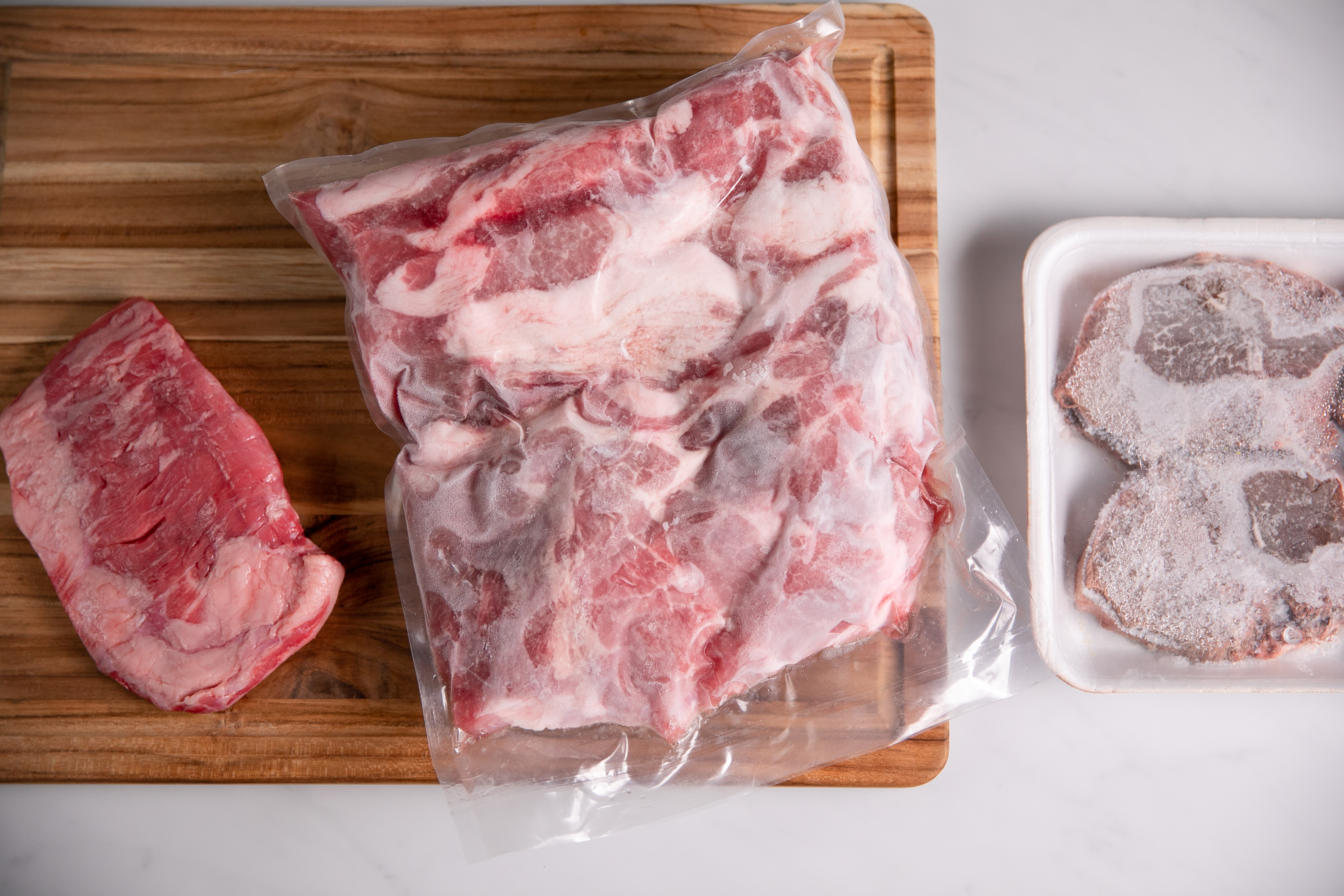
>>> Check out more photo & video content on our Instagram!<<<
Before storing any food in the freezer for long-term storage (especially proteins), it is important to label your vacuum sealed bags. Using any permanent marker or sticker label, write what the protein is and the date of vacuum sealing, so you know how long you can keep it in the freezer before it needs to be cooked.
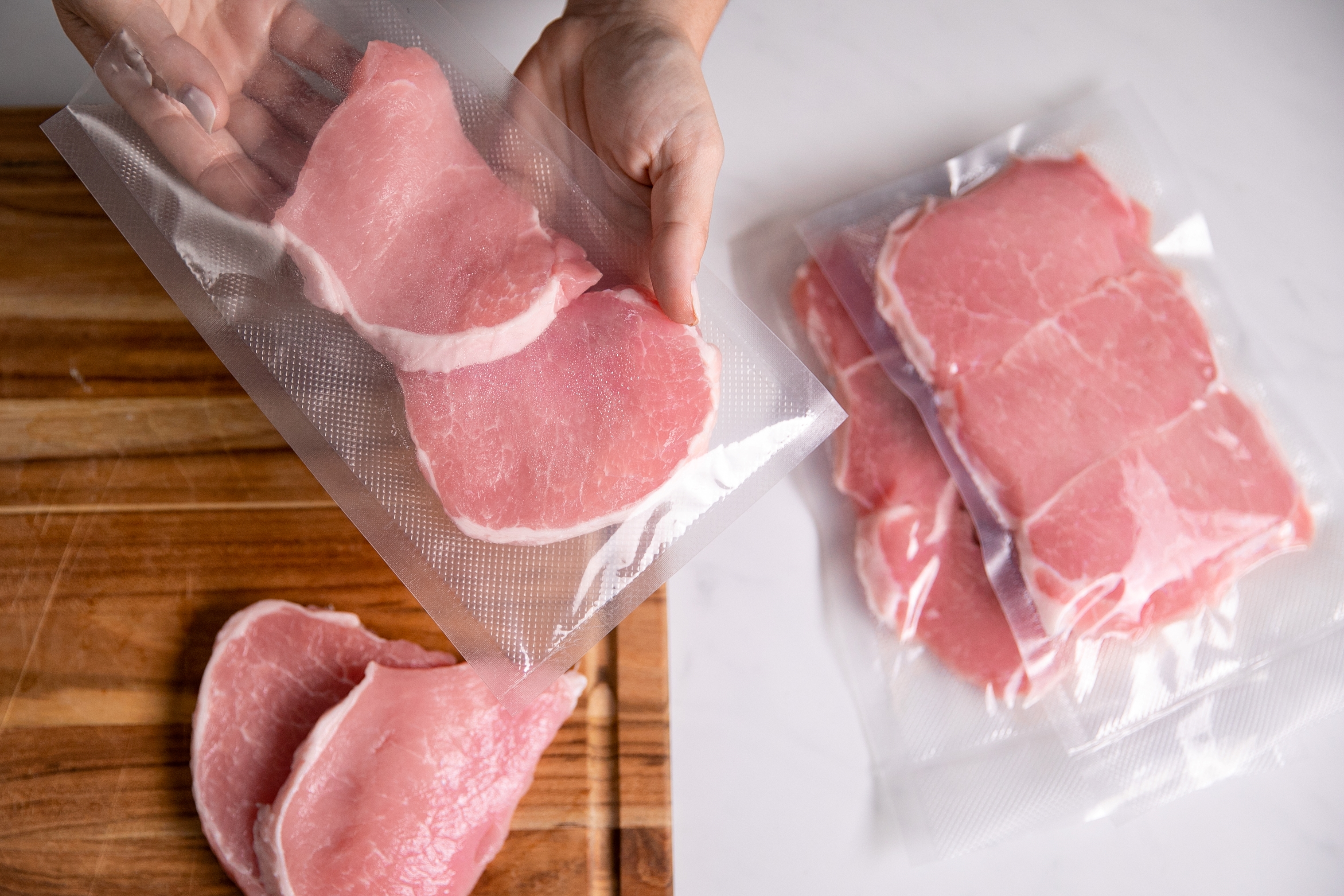
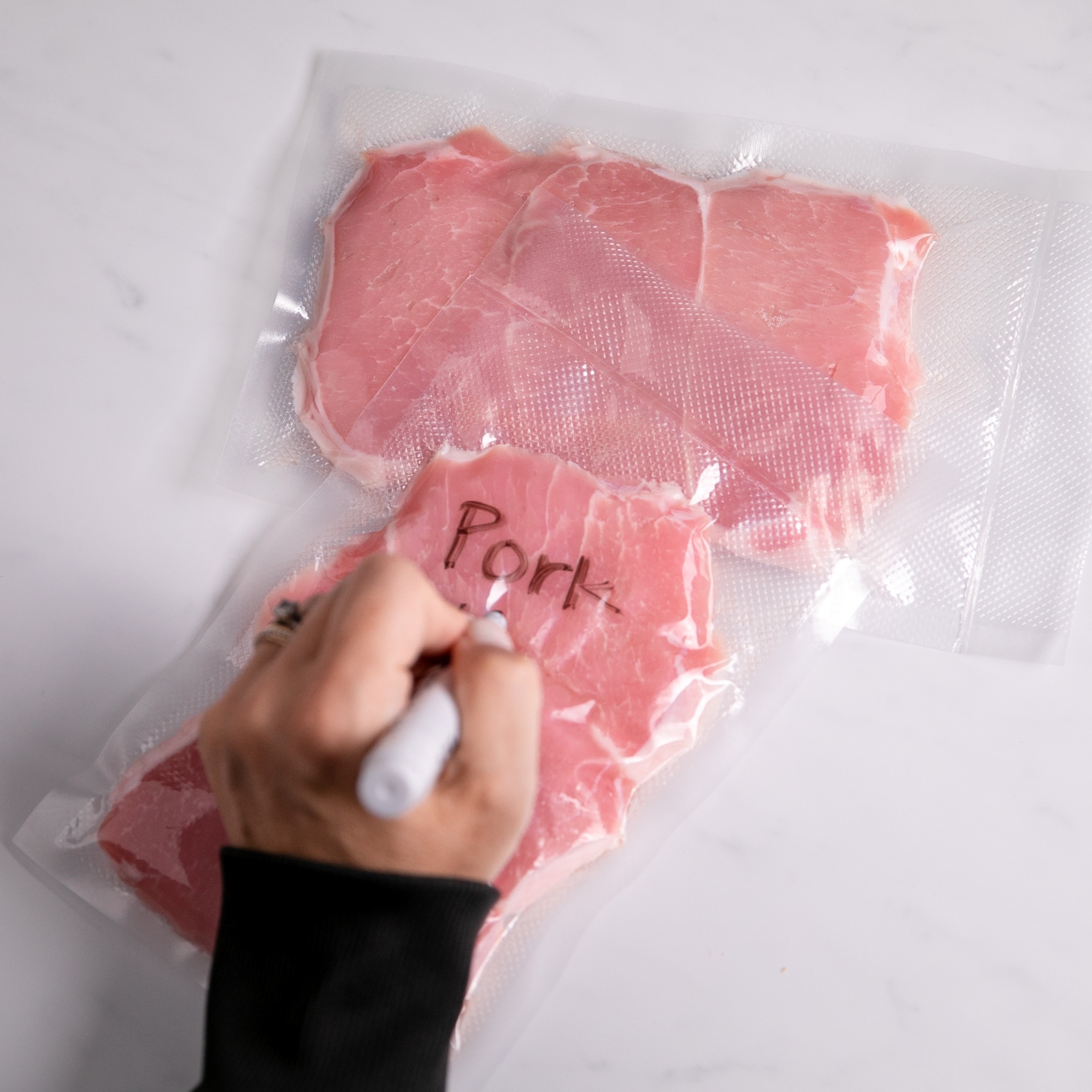
>>> Check out more photo & video content on our Instagram!<<<
Compared to regular storage methods, vacuum sealing proteins can last so much longer! Red meat and white meat can only be stored in the freezer for a few months if placed in tupperware, paper wrapping, or a plastic bag. When vacuum sealed, it can be stored in the freezer for 2 - 3 years without freezer burn. Vacuum sealed fish or shellfish can last up to 2 years in the freezer.
With the food shortages we have been experiencing, you don’t want to risk not being prepared, so make sure to buy ahead of time and vacuum seal what you can!
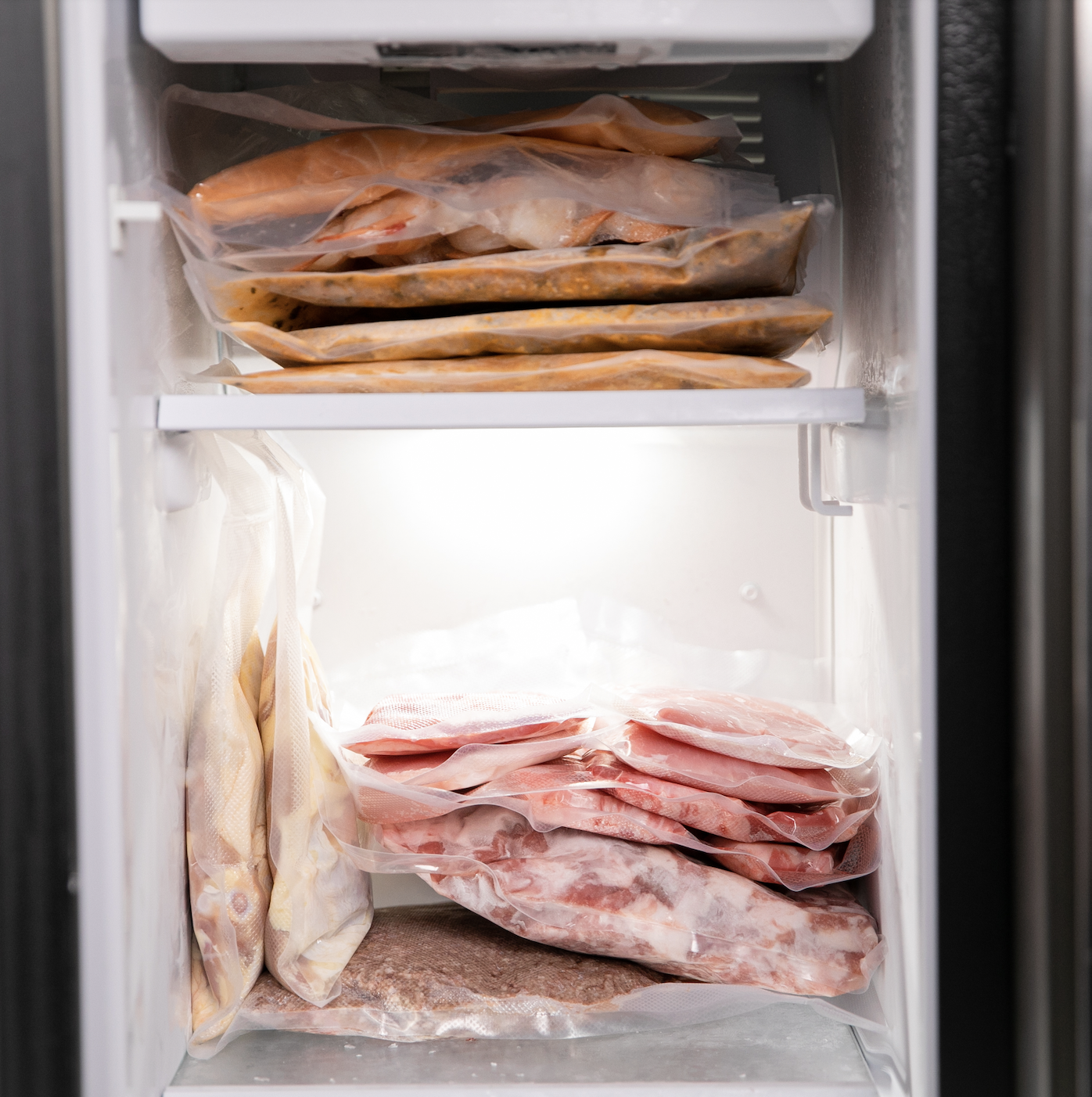
>>> Check out more photo & video content on our Instagram!<<<

